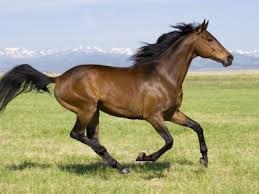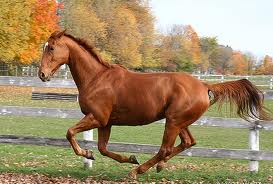
|
Harmony and Luckiness Imp.&Exp. Co., Ltd. |
|
|||
Products Category |
Thoroughbred horsesProduct name : Thoroughbred horses Item : H-01 Details :The Thoroughbred is a horse breed best known for its use in horse racing, known for their agility, speed and spirit. Thoroughbreds are used mainly for racing, but are also bred for other riding disciplines such as show jumping, combined training, dressage, polo, and fox hunting. They are also commonly crossbred to create new breeds or to improve existing ones, and have been influential in the creation of the Quarter Horse, Standardbred, Anglo-Arabian, and various warmblood breeds. Thoroughbred racehorses perform with maximum exertion, which has resulted in high accident rates and health problems such as bleeding from the lungs. Other health concerns include low fertility, abnormally small hearts and a small hoof-to-body-mass ratio. There are several theories for the reasons behind the prevalence of accidents and health problems in the Thoroughbred breed, and research is ongoing. Breed characteristics
Thoroughbreds have a well-chiseled head. The typical Thoroughbred ranges from 15.2 to 17.0 hands (62 to 68 inches, 157 to 173 cm) high, averaging 16 hands (64 inches, 163 cm). They are most often bay, seal brown, chestnut, black, or gray. Less common colors recognized in the United States include roan and palomino. White is very rare, but is a recognized color separate from gray. The face and lower legs may be marked with white, but white will generally not appear on the body. Coat patterns that have more than one color on the body, such as Pinto or Appaloosa, are not recognized by mainstream breed registries. Good-quality Thoroughbreds have a well-chiseled head on a long neck, high withers, a deep chest, a short back, good depth of hindquarters, a lean body, and long legs. Thoroughbreds are classified among the "hot-blooded" breeds, which are animals bred for agility and speed and are generally considered spirited and bold. Thoroughbreds born in the Northern Hemisphere are officially considered a year older on the first of January each year; those born in the Southern Hemisphere officially are one year older on the first of August. These artificial dates have been set to enable the standardization of races and other competitions for horses in certain age groups. Registration, breeding, and population
About 37,000 Thoroughbred foals are registered each year in North America, with the largest numbers being registered in the states of Kentucky, Florida and California. Australia is the second largest producer of Thoroughbreds in the world with almost 30,000 broodmares producing about 18,250 foals annually. Britain produces about 5,000 foals a year, and worldwide, there are more than 195,000 active broodmares, or females being used for breeding, and 118,000 newly registered foals in 2006 alone. The Thoroughbred industry is a large agribusiness, generating around $34 billion in revenue annually in the United States and providing about 470,000 jobs through a network of farms, training centers and race tracks. Value
Prices of Thoroughbreds vary greatly, depending on age, pedigree, conformation, and other market factors. In 2007, Keeneland Sales, a United States based sales company, sold 9,124 horses at auction, with a total value of $814,401,000, which gives an average price of $89,259.[ As a whole for the United States in 2007, The Jockey Club auction statistics indicated that the average weanling sold for $44,407, the average yearling sold for $55,300, average sale price for two-year-olds was $61,843, broodmares averaged $70,150, and horses over two and broodmare prospects sold for an average of $53,243. For Europe, the July 2007 Tattersall's Sale sold 593 horses at auction, with a total for the sale of 10,951,300 guineas,for an average of 18,468 guineas. Also in 2007, Doncaster Bloodstock Sales, another British sales firm, sold 2,248 horses for a total value of 43,033,881 guineas, making an average of 15,110 guineas per horse. Australian prices at auction during the 2007-2008 racing and breeding season were as follows: 1,223 Australian weanlings sold for a total of $31,352,000, an average of $25,635 each. 4,903 yearlings sold for a total value of A$372,003,961, an average of A$75,853. Five hundred two-year-olds sold for A$13,030,150, an average of A$26,060, and 2,118 broodmares totalled A$107,720,775, an average of A$50,860. Uses
Race horses competing on turf (grass racetrack) in Germany. Most races in Europe are run on turf, while most races in North America are run on dirt. Although the Thoroughbred is primarily bred for racing, the breed is also used for show jumping and combined training because of its athleticism, and many retired and retrained race horses become fine family riding horses, dressage horses, and youth show horses. The larger horses are sought after for hunter/jumper and dressage competitions, whereas the smaller horses are in demand as polo ponies. Send Inquiry : |
Copyright © 2025 Harmony and Luckiness Imp.&Exp. Co., Ltd. All Rights Reserved







 Cattle
Cattle  Horse
Horse 


